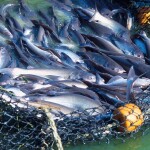In the 10 years between 2005 and 2015, Brazil’s tilapia (Oreochromis niloticus) production increased by 223 percent thanks to improved modernization, more intensified production and high market demand for the species, confirmed the Brazilian Agricultural Research Corporation, Embrapa Pesca e Aquicultura.
For 2005, the Brazilian Institute of Environment and Natural Renewable Resources (IBAMA) calculated the country’s tilapia harvest at 67,850 metric tons (MT). The Brazilian Institute of Geography and Statistics (IBGE) put production for 2015 at 219,329 MT.
This data was collected as part of the study project, "Socioeconomic Impacts of tilapicultura in Brazil," executed by Embrapa and partners, who visited seven large tilapia production hubs.
Tilapia accounts for around 30 percent of Brazil’s aquaculture production and experts believe that the increased production could lead the country to be a major exporter of the species in the near future. Indeed, Brazilian tilapia exports grew by 77 percent last year with the trade totalling 760 MT worth USD 5 million (EUR 4.6 million).
However, the average value of tilapia exports last year was USD 6.96 (EUR 6.37) per kg, down 14.4 percent from the previous year.
According to Embrapa, the United States is the main buyer of Brazilian tilapia, accounting for 99 percent of total volume in 2016. Sales to the U.S. market mainly comprise fresh fillets.
China is the No. 1 tilapia producer in the world with an estimated harvest of 1.7 million MT last year. Total tilapia production for 2016 was in the region of 5.6 million MT and is forecast to climb by 4.5 percent to 5.8 million MT this year.







